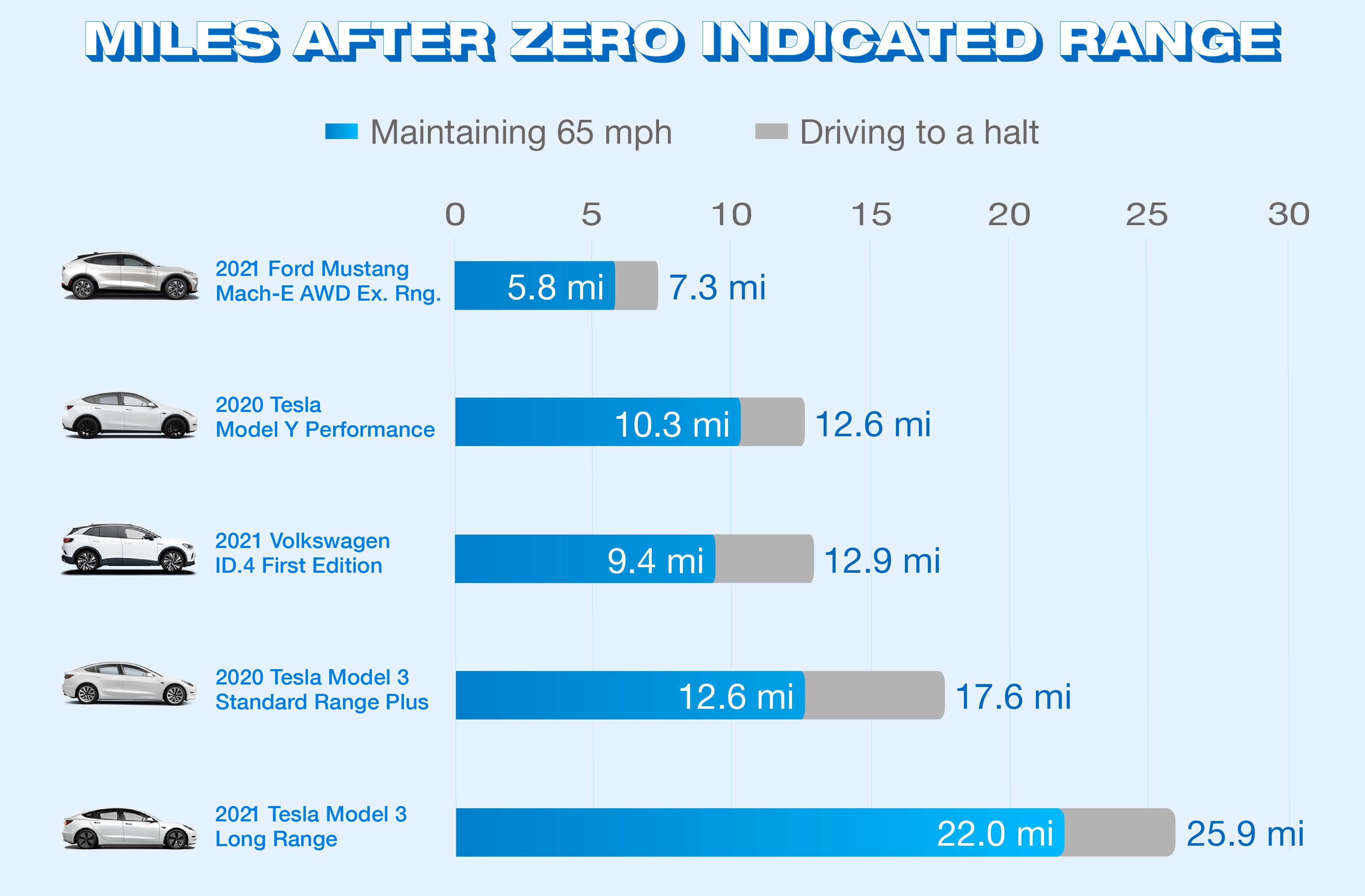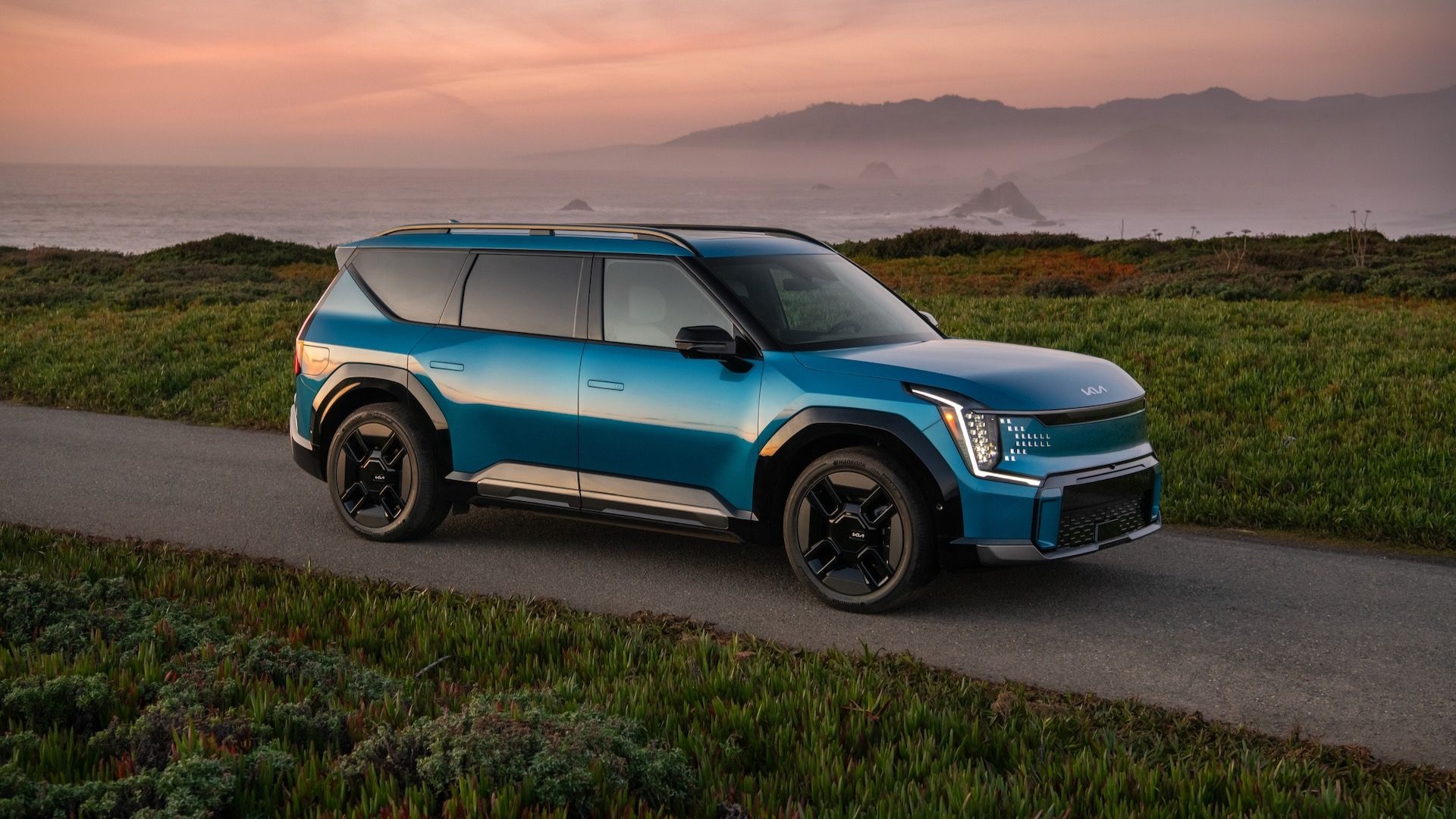When an electric car's range estimate reads zero miles, there's often still a few miles of range left. This range buffer is more than just a few miles in Tesla models, though—and considerably more than those of other makes—Edmunds found in a recent comparison test.
The test actually came about because Tesla disputed the results of a previous range test they had done. In that test, every Tesla failed to meet its EPA range rating. Tesla argued this was because testers didn't try to drive the cars past an indicated zero miles of range. If the cars had been driven until they stopped, they would have achieved the EPA range figures, according to the automaker.
So Edmunds rounded up three Teslas for a retest: a 2020 Model 3 Standard Range Plus and 2020 Model Y Performance from its own fleet, and a 2021 Model 3 Long Range provided by Tesla. A Ford Mustang Mach-E and Volkswagen ID.4 were also included in the test.
The two Model 3 variants drove the longest with an indicated zero miles of range. The Long Range kept going for 25.9 miles, while the Standard Range Plus went 17.6 miles past the point where its indicated range dropped to zero.
The Model Y and ID.4 were in a virtual dead heat, at 12.6 miles and 12.9 miles past zero, respectively. The Mach-E went 7.3 miles with an indicated zero miles of range.
All cars were driven in loops at a consistent 65 mph on a test track. While all five EVs went a significant distance at 65 mph with an indicated zero miles of range, they all lost speed before coming to a stop.
They then tested its Model Y Performance and the Tesla-provided Model 3 Long Range on public roads, and found that they had shorter range buffers than in the closed-course test. Tesla told Edmunds that there is no fixed range buffer, and that it can be affected by multiple factors, including ambient temperature and driving style up to the final few miles, as well as current speed and acceleration.
It's a reminder that the range estimates on EV dashboards are just that. They can change depending on a number of factors. However, this test does confirm that automakers build in a significant amount of extra range beyond what's indicated, and underscores a significant difference among current electric vehicles. Another one is cold-weather range performance.
Range and efficiency have been Tesla market strengths for years. A recent study suggested that with their longer daily miles driven, Teslas might be acting more often as replacements for internal-combustion vehicles. Although that study didn't include the latest group of long-range EVs.
Overall, though, researchers have found the idea of range anxiety is largely overblown. And as even AAA has pointed out, just owning and getting used to the pattern of driving and charging will erase most concerns.













